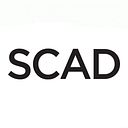The Cardboard Conundrum
SCAD Professor Jane Zash, graphic design, is a longtime proponent of reducing packaging waste. Her passion has only increased since the onset of the COVID-19 global pandemic. Stepping out of her home to see waste bins teeming with cartons has emphasized the need to address the dangers of single-use paper products. In her design classes, Zash challenges students to find ways to reduce, reuse, and repurpose, to curb waste at the onset of a project, and to minimize the need for recycling programs, landfills, and trash altogether.
Jane Zash:
The current global pandemic has only exacerbated our packaging waste problem. With consumer reliance increasing on shipped items, and online giants as well as independent retailers not being accountable, we are adding to our already seemingly insurmountable cardboard conundrum. What are we going to do with all of these boxes?
Before you say, “Not me!” or worse yet, “What boxes?” let’s look at some U.S. statistics:
Around 80% off all products sold are packaged in cardboard, totaling around 400 billion square feet.
Approximately 100 billion corrugated boxes are used per year; cardboard and paper make up around 41% of solid waste streams.
An average household can throw away as much as 13,000 separate pieces of cardboard every year.
To put these numbers further into perspective, the average American uses around seven trees per year in paper and cardboard. Accounting for the total U.S. population, that’s almost two-and-a-half billion trees, a staggering amount.
Now, you might be reading this and saying, “But I recycle!” First, let me genuinely thank you for your commitment to our planet. Second, let me ask that you redouble your efforts. According to the EPA, of the 267.8 million tons of municipal solid waste generated by Americans in 2017, only 94.2 million tons were recycled or composted.
Sadly, we are letting our planet down. So, what can we do? For years we heard about the three “Rs”: Recycle, Repurpose, Reuse. But it’s clear from the data that these three R’s are no longer sufficient. It’s time for a new, better “R”:
We must Relearn.
In my design classes at SCAD, I teach about our responsibilities as producers of tangible objects, and the need to create solutions from the beginning. Students learn about significantly reducing single-use objects, as well as the importance of reusing and repurposing materials through an awareness of the life-span of materials as they go from development to the trash heap — often traveling across the ocean to be processed in foreign countries. What may be “out of sight, out of mind” for us can still have devastating consequences for our connected world.
The design classroom is a laboratory for problem solving. As a professor at SCAD, I observe firsthand the engagement of young, creative minds who relish addressing challenging problems. My graphic design students work in collaboration with students from other disciplines, including service design, industrial design and design for sustainability, to achieve informed, cross-disciplinary solutions. I am optimistic and confident that through awareness coupled with design, this generation will solve this important issue.
By Robert Almand
